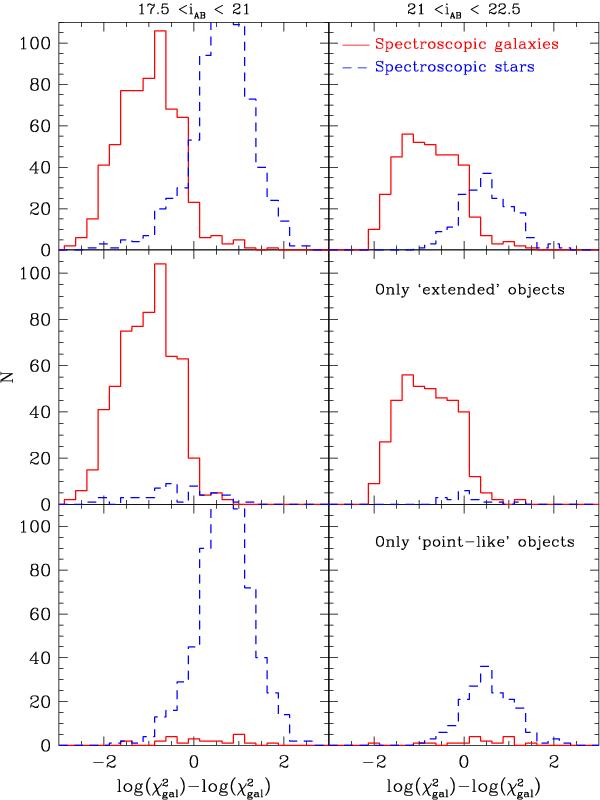Fig. A.2

Distribution of  for spectroscopically confirmed stars (dashed histograms) and galaxies (solid histograms) for the VVDS-Wide spectroscopic sample in W4. The sample is split into a bright and faint sample, corresponding to the split used to classify VIPERS galaxies. Ideally, one would expect that all galaxies have
for spectroscopically confirmed stars (dashed histograms) and galaxies (solid histograms) for the VVDS-Wide spectroscopic sample in W4. The sample is split into a bright and faint sample, corresponding to the split used to classify VIPERS galaxies. Ideally, one would expect that all galaxies have  , while stars are confined to positive values. However, as can be seen, tails of both populations overlap each other. Top: no selection is applied on the half-flux radius rh. Middle: only objects with rh ≥ μrh + 3σrh are considered (i.e. “geometric” galaxies). Bottom: only objects with rh<μrh + 3σrh are considered (i.e. “geometric” stars).
, while stars are confined to positive values. However, as can be seen, tails of both populations overlap each other. Top: no selection is applied on the half-flux radius rh. Middle: only objects with rh ≥ μrh + 3σrh are considered (i.e. “geometric” galaxies). Bottom: only objects with rh<μrh + 3σrh are considered (i.e. “geometric” stars).
Current usage metrics show cumulative count of Article Views (full-text article views including HTML views, PDF and ePub downloads, according to the available data) and Abstracts Views on Vision4Press platform.
Data correspond to usage on the plateform after 2015. The current usage metrics is available 48-96 hours after online publication and is updated daily on week days.
Initial download of the metrics may take a while.


